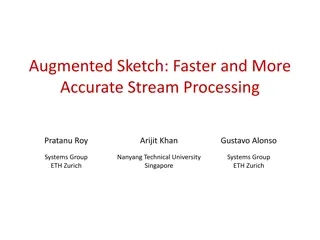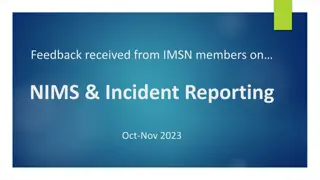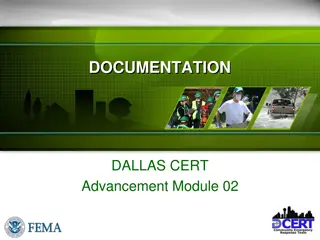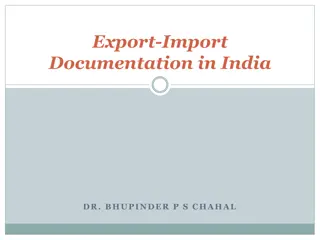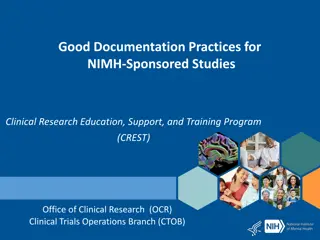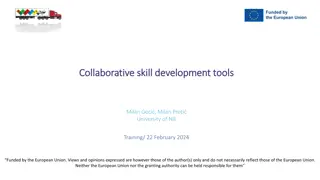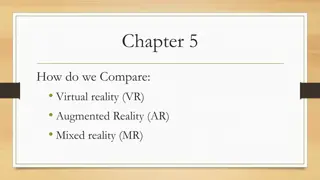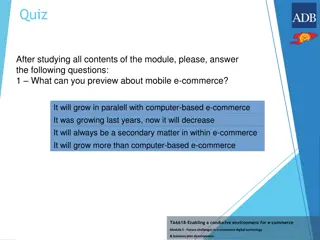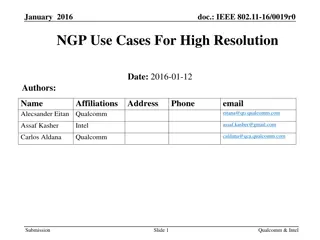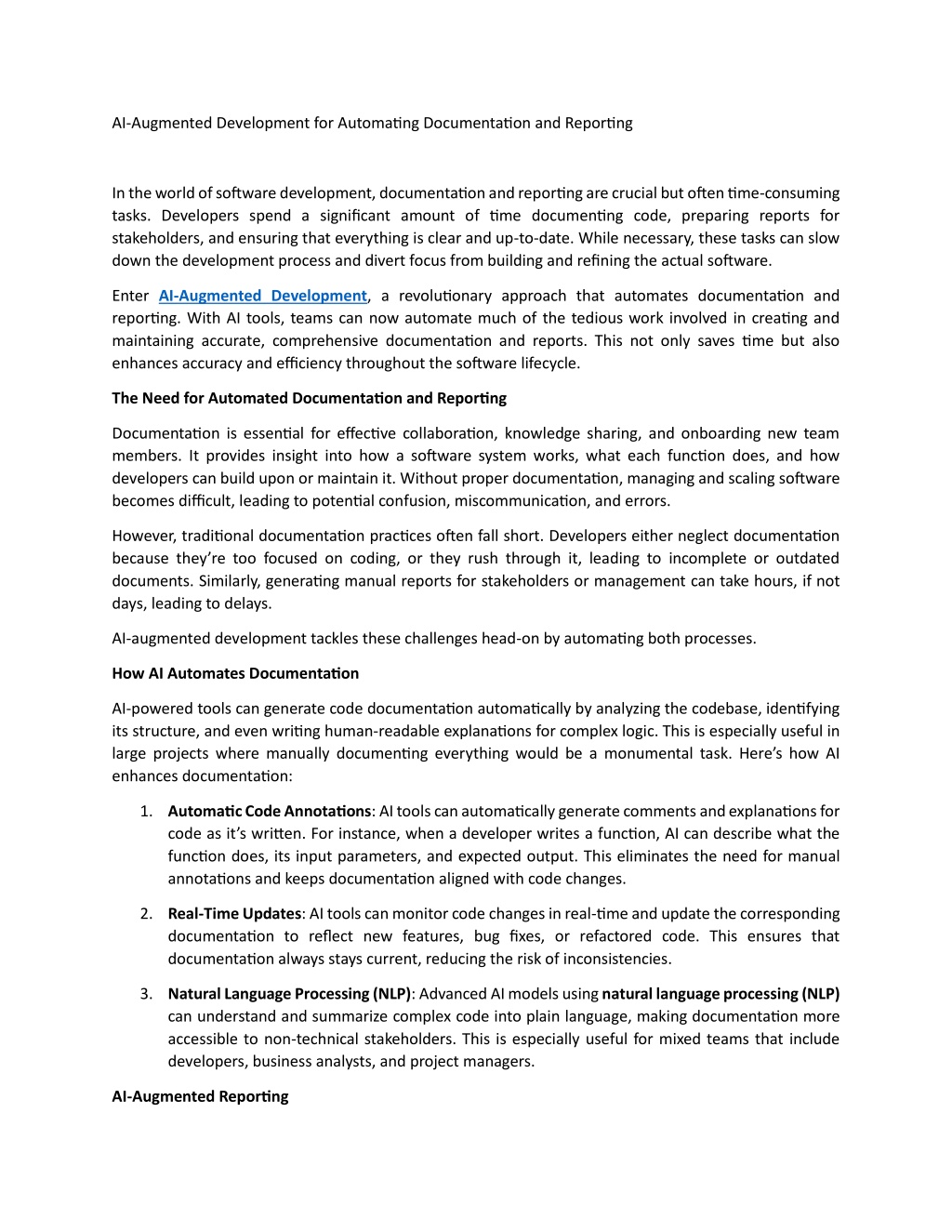
AI-Augmented Development for Automating Documentation and Reporting
It aims to create value for the customer by eliminating waste, optimizing processes, and enhancing collaboration.
Download Presentation

Please find below an Image/Link to download the presentation.
The content on the website is provided AS IS for your information and personal use only. It may not be sold, licensed, or shared on other websites without obtaining consent from the author. Download presentation by click this link. If you encounter any issues during the download, it is possible that the publisher has removed the file from their server.
E N D
Presentation Transcript
AI-Augmented Development for Automating Documentation and Reporting In the world of software development, documentation and reporting are crucial but often time-consuming tasks. Developers spend a significant amount of time documenting code, preparing reports for stakeholders, and ensuring that everything is clear and up-to-date. While necessary, these tasks can slow down the development process and divert focus from building and refining the actual software. Enter AI-Augmented Development, a revolutionary approach that automates documentation and reporting. With AI tools, teams can now automate much of the tedious work involved in creating and maintaining accurate, comprehensive documentation and reports. This not only saves time but also enhances accuracy and efficiency throughout the software lifecycle. The Need for Automated Documentation and Reporting Documentation is essential for effective collaboration, knowledge sharing, and onboarding new team members. It provides insight into how a software system works, what each function does, and how developers can build upon or maintain it. Without proper documentation, managing and scaling software becomes difficult, leading to potential confusion, miscommunication, and errors. However, traditional documentation practices often fall short. Developers either neglect documentation because they re too focused on coding, or they rush through it, leading to incomplete or outdated documents. Similarly, generating manual reports for stakeholders or management can take hours, if not days, leading to delays. AI-augmented development tackles these challenges head-on by automating both processes. How AI Automates Documentation AI-powered tools can generate code documentation automatically by analyzing the codebase, identifying its structure, and even writing human-readable explanations for complex logic. This is especially useful in large projects where manually documenting everything would be a monumental task. Here s how AI enhances documentation: 1.Automatic Code Annotations: AI tools can automatically generate comments and explanations for code as it s written. For instance, when a developer writes a function, AI can describe what the function does, its input parameters, and expected output. This eliminates the need for manual annotations and keeps documentation aligned with code changes. 2.Real-Time Updates: AI tools can monitor code changes in real-time and update the corresponding documentation to reflect new features, bug fixes, or refactored code. This ensures that documentation always stays current, reducing the risk of inconsistencies. 3.Natural Language Processing (NLP): Advanced AI models using natural language processing (NLP) can understand and summarize complex code into plain language, making documentation more accessible to non-technical stakeholders. This is especially useful for mixed teams that include developers, business analysts, and project managers. AI-Augmented Reporting
Just as AI helps automate documentation, it also streamlines reporting. Regular reports are vital for project transparency, progress tracking, and ensuring that stakeholders remain informed. However, generating these reports manually can be labor-intensive, particularly in agile environments where frequent updates are necessary. AI simplifies this process by: 1.Automating Performance Metrics: AI tools can automatically track key performance indicators (KPIs) such as code quality, testing results, build success rates, and deployment frequency. These metrics can be instantly compiled into detailed reports that are easy to share with team members or stakeholders. 2.Customizable Reports: AI tools allow developers to customize reports based on specific project needs. Whether the report is intended for a technical audience or business stakeholders, AI can tailor the information and language accordingly, ensuring that reports are relevant and understandable to their recipients. 3.Real-Time Insights: AI can analyze real-time data from development processes to provide insights into productivity, bottlenecks, and potential risks. This allows project managers to generate instant progress reports without manually sifting through data, enabling more informed decision-making. 4.Predictive Reporting: One of the most powerful aspects of AI-augmented reporting is its predictive capabilities. AI can forecast project timelines, identify potential delays, and suggest improvements based on historical data. This allows teams to anticipate problems before they occur and adjust their strategy accordingly. Benefits of AI-Augmented Documentation and Reporting The impact of AI automation in these areas is transformative. Here are some of the key benefits: 1.Increased Efficiency: By automating routine documentation and reporting tasks, developers can spend more time focusing on writing code, improving features, and solving complex problems. 2.Improved Accuracy: AI eliminates human error, ensuring that documentation is accurate, complete, and up-to-date. Similarly, reports generated by AI are based on real-time data, reducing the risk of oversight or outdated information. 3.Faster Development Cycles: Automated reporting speeds up communication with stakeholders, while real-time documentation ensures that new developers can quickly understand and contribute to the project. This leads to shorter development cycles and faster time-to-market. 4.Better Collaboration: With clear, up-to-date documentation, team members can collaborate more effectively, reducing miscommunication and improving overall project alignment. Conclusion AI-augmented development is transforming the way teams handle documentation and reporting. By automating these essential but time-consuming tasks, AI allows developers to focus on what truly matters building great software. As AI continues to advance, its ability to enhance productivity, improve accuracy, and streamline workflows will make it an indispensable tool in the future of software development.
Read automating.html More: https://techhorizonsolutions.blogspot.com/2024/09/ai-augmented-development-for-

